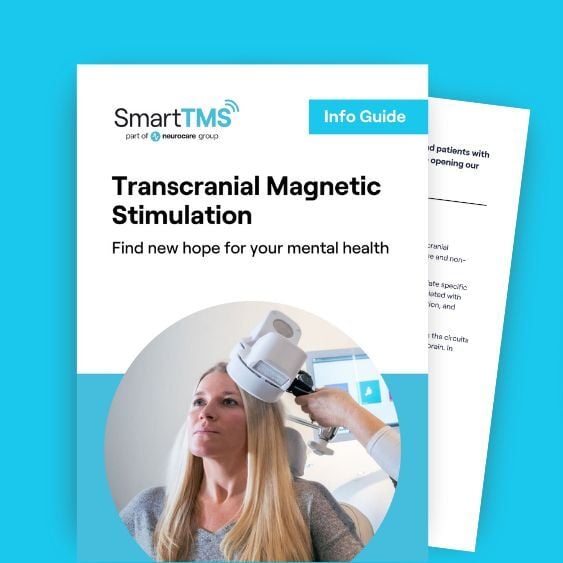Luke's journey: overcoming depression with TMS
For over a decade, Luke struggled with depression and anxiety. Luke kindly shares his story of treatment with Smart TMS on his YouTube channel.
For over a decade, Luke struggled with depression alongside anxiety and cyclothymia, a condition that causes mood fluctuations. Despite trying numerous approaches, nothing provided lasting relief—until he discovered Transcranial Magnetic Stimulation (TMS). In this testimonial, he shares his experience of how this treatment changed his life.
His journey with TMS began somewhat unexpectedly when he first visited the clinic in London with fellow vlogger Dodie, who was undergoing treatment herself. At the time, he wasn’t convinced it was for him. However, more than a year later, as his depression started interfering with his work on a film project, he realized that seeking treatment could help him continue doing what he loved—giving him the motivation he needed to finally pursue it.
Understanding TMS treatment
Luke explains that TMS works by applying magnetic pulses to specific areas of the brain responsible for processing positive and negative emotions. The stimulation helps to shrink the part of the brain linked to anxiety while strengthening the areas associated with happiness.
“Basically, I lay there for 22 minutes a day, every weekday for six weeks, with a giant fidget spinner magnetically pulsing my brain – and somehow – it cured my depression!” he says.
Many people ask Luke what the treatment feels like, and he compares the sensation to a woodpecker tapping on his brain. While he acknowledges that it can be uncomfortable, he emphasizes that it’s tolerable for short periods—especially given the life-changing results.
The turning point
After just a few weeks of treatment, Luke started to notice subtle but profound changes in his daily life.
“…when I left, everything seemed brighter. I felt happier. The dog that was in the office downstairs felt more cuddly and lovely, and I made friends with the local bin men and went skating on my electric skateboard with them—which normally that would be an absolute ‘I would not do that, too scary. Strangers? No, no, no.’ But I had a great time.”
Beyond these everyday moments of joy, his transformation was backed by clear data. Using a commonly used depression assessment questionnaire, his results shifted dramatically:
- Before treatment: 26 out of 30 (severe depression)
- After treatment: Consistently under 5 out of 30 (minimal or no depression)
A lasting change
The most remarkable part of Luke’s story is that his improvement has lasted.
“The best thing is that supposedly it’s permanent,” he says.
Reflecting on his experience, Luke hopes others struggling with depression can find hope in his story.
“If there’s one thing I want to convey in this video, it’s that I have been in the position of having seemingly incurable depression, and then I’ve managed to get it fixed. It reminded me that depression is an illness—it’s not just ‘you’re pathetic and lazy.’ And it’s not just like you deserve this or maybe you’re just broken and everyone else is not broken.
“Having seen such a quick change in myself, I see how much of it is chemicals or the way your brain is working. It’s not that you deserve to be like that, it’s not that you’ll always be like that—you just have to find the way of fixing it.”
Luke’s experience highlights the power of TMS as a treatment for depression, offering a sense of hope and possibility for those who feel like they’ve exhausted every option. For him, it was the breakthrough he had been searching for—and a reminder that healing is possible.










